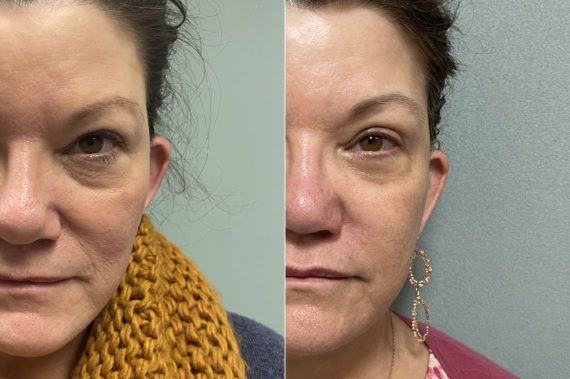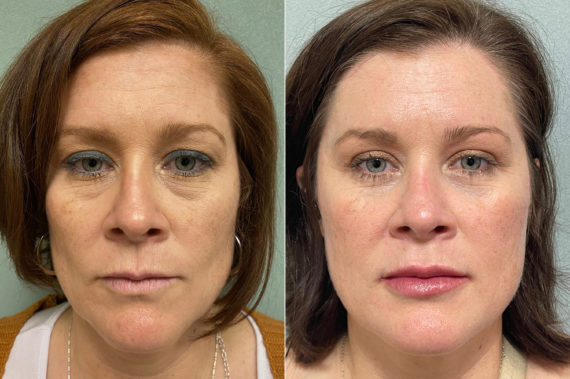
Are you wondering whether upper or lower eyelid surgery Irvine is the right choice for you? This article navigates the virtues, impacts on vision, and societal impressions of both procedures. It provides a comprehensive analysis of each operation’s nitty-gritty and the recovery process post-surgery. Stay tuned to discover which procedure could most beneficially alter your appearance and enhance your quality of life.
Understanding the Types of Eyelid Surgeries
Upper and lower blepharoplasty are surgical procedures designed to improve the facial appearance and function of the areas around the eyes. Upper eyelid blepharoplasty, in some cases, is performed to restore normal vision hampered by loose skin, resulting in a youthful and refreshed look. On the other hand, lower blepharoplasty serves to address wrinkles, excess skin, and puffiness commonly exhibited in the lower eye region.
These procedures involve the delicate manipulation of the excess tissues present in these areas. The target is the reforming of the eye’s structures in a way that they appear more youthful and refreshed. The plastic surgeon achieves this by subtly reshaping the fatty tissues and skin that contribute to an aged or tired appearance.
The Impact of Each Procedure on Vision
Upper and lower eyelid surgery have different effects on a person’s vision. The upper eyelid lift primarily impacts the field of vision. Various studies have documented that heavy or drooping skin can obstruct the superior visual field. Such individuals often tilt their heads backward to compensate, leading to neck discomfort over time. A well-executed upper blepharoplasty can alleviate these issues, improving not only the person’s field of vision but also their overall comfort.
The lower eyelid surgery, on the other hand, does not directly affect vision itself. It targets esthetic problems more than functional ones, such as bags under the eyes, wrinkles, or dark circles. Although these changes are cosmetic, they can indirectly improve a person’s perception as they reduce distractions and boost self-confidence.
Together, both procedures enhance the person’s overall quality of vision and self-image. Last, but not least, patients must consult with their medical team for the appropriate evaluation and advice.
Upper Blepharoplasty for an Alert Appearance
Upper eyelid surgery, when discussed as a type of treatment for drooping or aged eyelids, brings about several effects. Notably, it helps patients obtain a more alert and rested appearance. This treatment involves correcting the underlying muscle and removing excess skin, effectively reviving the eye’s youthful look.
This treatment’s focused changes can significantly impact how others perceive your level of alertness, potentially leading to interpersonal interactions’ improvements. Thus, upper blepharoplasty can go beyond physical changes and influence aspects of your everyday life.
Lower Blepharoplasty for Reducing Dark Circles
Lower blepharoplasty is a surgical method primarily chosen to address under-eye dark circles. Dark circles often appear because of fat displacement and skin thinning, causing the lower eyelids to appear hollow. Lower blepharoplasty Irvine tackles these problems effectively, resulting in a rejuvenated appearance.
Lower blepharoplasty can also help to address tear troughs, the area between the lower eyelids and cheeks. This procedure can tighten the skin and fill in the hollows of the tear troughs, resulting in a smoother appearance and a more youthful look.
Internal or external incisions are made discreetly, ensuring fine lines and creases are less conspicuous. This procedure, though somewhat complex, provides a long-term solution for those distressed by persistent under-eye dark circles.
Societal Perceptions and Psychological Outcomes
Both of these types of eyelid surgeries offer significant mental health benefits. By improving facial aesthetics, these treatments can boost patient satisfaction and self-esteem. The psychological lift from an improved appearance is immeasurable, but it is well-documented in research and testimonials. Patients often share positive experiences following these procedures, underlining an immediate increase in self-confidence.
A drooping eyelid may lead others to perceive the person as tired or uninterested. Hence, upper eyelid surgery gives a more alert and youthful appearance, refashioning societal perceptions. Meanwhile, lower blepharoplasty surgery reduces puffiness and bags under the eyes often associated with age or fatigue. Resulting muscle tightening is more than physical – it conjures a sense of rejuvenation and enhanced well-being.
Analysis of the Surgical Procedures
A surgical procedure for both upper and lower blepharoplasty starts with administering local or general anesthesia to ensure patient comfort. For the first one, an incision is made along the natural crease of the upper eyelid skin, allowing for discreet removal of the excess, muscle, and sometimes fat.
Lower eyelid blepharoplasty encompasses a different approach. An incision is made either just below the lash line or inside the eyelid. The choice of approach varies based on individual cases, and it primarily focuses on removing or repositioning excess fat in the eyelid.
Eyelids are delicate, with a complex structure of muscles and skin. Therefore, the success of these treatments lies in the surgeon’s skill in handling this complexity while making precise changes. Different surgeons may adopt various techniques in performing these procedures based on their expertise and the unique needs of their patients.
In conclusion, the effectiveness of blepharoplasty treatments involves careful analysis and execution of the surgical procedure, as well as individualized treatment planning based on the unique needs of each patient’s eyelids.
Recovery and aftercare for Upper and Lower Blepharoplasty
The recovery period post-blepharoplasty is generally quick, but it certainly requires a few cautionary measures to ensure optimal healing. The initial few days may include swelling, bruising, and minor discomfort in the treated area; these are normal effects of the surgery. Cold compresses, eye drops, and prescribed medication can aid in faster recovery.
With time and proper aftercare, the swelling and bruising will reduce. It’s crucial to avoid strenuous activities and direct exposure to sunlight on the upper eyelids. Within the first week, patients usually can resume normal activities, though complete healing takes a few weeks.
Proper muscle function is imperative for the movements of the eyelids. Specific exercises can facilitate the natural movement and closure of the eyelids without causing stress. Adherence to the aftercare plan designed by your doctor is crucial to ensure the longevity of the treatment’s benefits.
Remember, everyone’s recovery experience will vary. Your individual healing timeline will depend on various factors including your overall health, the extent of the surgery, and how well you adhere to aftercare instructions.
Effects and Risks of Blepharoplasty
No surgical procedure is without potential risks, and blepharoplasty procedures are no exception. Although potential side effects tend to be minor, such as temporary swelling or bruising, there can also be more serious complications. Bleeding or infection can occur in some cases, and some patients may experience a loss of sensation around the eyes or an uneven eyelid margin.
Candidates for eyelid surgery must discuss all potential risks with their surgeon before deciding whether or not to proceed. Another risk factor to consider is that the results of blepharoplasty may not always match patient expectations, so it is important to have realistic expectations going into the procedure.
Which Procedure Suits You Best?
Selecting the right procedure between upper and lower blepharoplasty hinges on your personal needs. For those troubled with bags under the eyes, lower blepharoplasty serves best. This type of procedure revitalizes both your eyes and overall demeanor. If drooping upper eyelids hinder your vision or make you appear older, then upper blepharoplasty becomes a prime choice. This procedure lifts the eyelids, enhancing your sight and giving a youthful outlook.
Another option available is a combined treatment, which combines both upper and lower blepharoplasty with a brow lift. A brow lift is a procedure that lifts the eyebrows and reduces wrinkles in the forehead region. By combining these procedures, patients can achieve an overall more youthful look while targeting specific areas of concern. Additionally, choosing this combination of treatments may require less downtime than if each procedure was performed separately.
Finally, always engage an in-person consultation to understand the nature of treatments and any possible consequences. This aligns your expectations with the potential outcomes of the surgery, helping you settle on what suits you the most.
Talk with a Facial Plastic Surgeon
Considering the intricacies of choosing between upper and lower blepharoplasty, consulting a specialist such as Dr. Hojjat is essential for making an informed decision. With an extensive background in facial plastic surgery, Dr. Hojjat can guide you through the process and aid in determining which procedure will yield the best results for you. So don’t wait, book your consultation with him to discuss your options in detail today.



